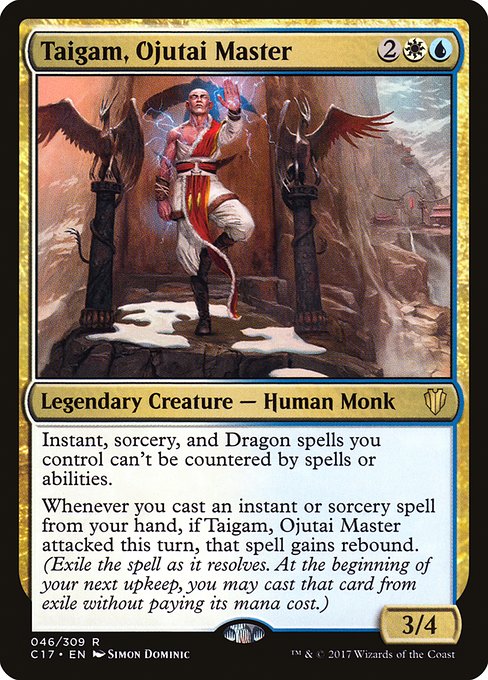Deck & Commander Strategies

Anje Falkenrath
An aggressive Madness deck that leverages discard synergies to quickly deploy threats and reuse spells, aiming to overwhelm opponents with constant pressure and recursion.

Kadena, Slinking Sorcerer
A Morph tribal deck that plays creatures face-down to keep opponents guessing, then flips them to generate value and board presence while applying incremental combat pressure.

Taigam, Ojutai Master
A control-oriented deck using instants and sorceries with Rebound to repeatedly cast spells on subsequent turns, focusing on card draw, counterspells, and tempo control.

Grumgully, the Generous
A treasure-based ramp deck focused on generating gold tokens to accelerate mana production and cast powerful spells and creatures to gain board dominance.
Gameplay Insights
- 1
Goblin Lackey's triggered ability to put additional Goblins onto the battlefield upon dealing damage allowed the Madness deck to develop a potent board state very early.
- 2
Taigam's ability to grant rebound to instants and sorceries cast during attack phases enabled repeated value spells, providing a strong card advantage engine.
- 3
The Morph deck used face-down creatures to obscure threats and delay opponents' responses, trading tempo for information advantage.
- 4
Treasure generation by Grumgully allowed for flexible mana ramp and multiple spell casts, supporting a greedy and resource-heavy game plan.
- 5
Early aggressive plays from the Madness deck shifted the game dynamics, forcing opponents to respond quickly or risk losing board control.
Notable Cards
-

Goblin Lackey
-

Taigam, Ojutai Master
-

Kadena, Slinking Sorcerer
-

Anje Falkenrath
-

Gemstone Caverns
Gameplay Summary
The game began with a lively four-player Commander match featuring decks built around the mechanics of Madness, Morph, Rebound, and +1/+1 counters.
Early turns saw players establishing their board presence and ramping mana, with Kadena's Morph deck deploying creatures frontside-down and Anje Falkenrath's Madness deck aggressively leveraging discard synergies.
Grumgully's Treasure-focused build aimed to accumulate gold and ramp development, while Taigam's control-oriented Rebound deck sought to draw cards and counter spells to maintain board control. A key turning point was the deployment of Goblin Lackey by the Madness player, which enabled explosive board development by putting additional Goblin permanents onto the battlefield whenever it dealt damage.
Meanwhile, Taigam's ability to grant rebound to instants and sorceries cast on attack phases allowed for repeated spellcasting that pressured opponents and drew significant card advantage.
Kadena's morphs applied incremental pressure, though the frontside-down creatures delayed immediate impact.
The game featured interactive combat and strategic tempo plays, with players gunning for the most threatening opponents while leveraging their unique mechanics to create incremental advantage.
The Madness deck's aggressive discard and creature recursion proved pivotal in early skirmishes, whereas the Rebound deck sought to stabilize and outvalue opponents over time.













![Commander VS: Commander 2019 Decks from MagicFest Las Vegas! [EDH] thumbnail](https://i.ytimg.com/vi/hAnTUfTMWBU/sddefault.jpg)
![Commander VS S16E8: Kadena VS Sevinne VS Ghired VS Anje [EDH] thumbnail](https://i.ytimg.com/vi/L9vIqyIu0dk/sddefault.jpg)





![This Time, It's Personal! [Commander VS] | Magic: the Gathering Commander Gameplay thumbnail](https://i.ytimg.com/vi/VibCoKEPrWU/sddefault.jpg)

















![Commander Gameplay #28 - Syr Gwyn v. Vito v. Nikya v. Grumgully [MtG] thumbnail](https://i.ytimg.com/vi/s6h1Jeacam0/sddefault.jpg)